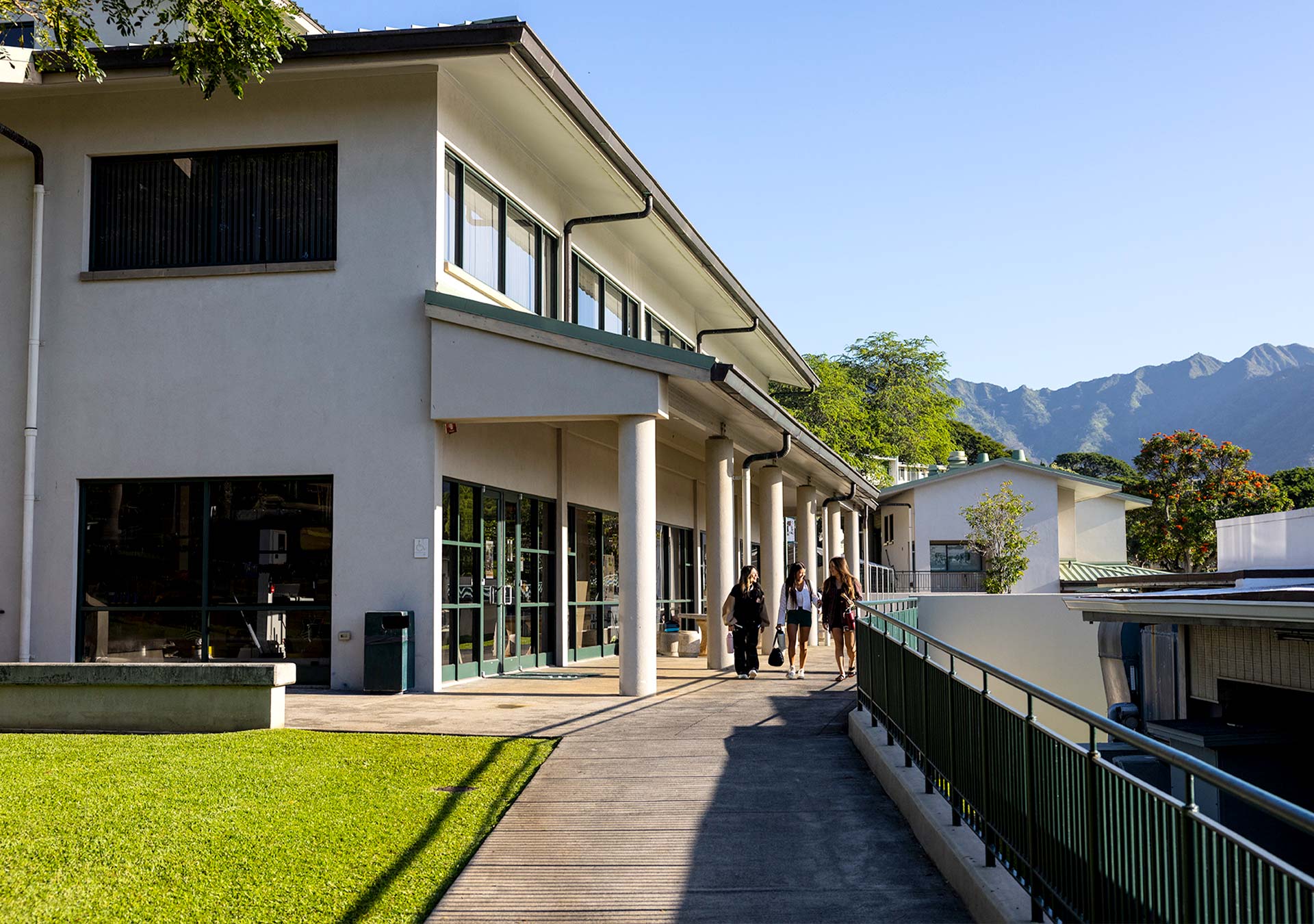A Legacy of Technological Innovation
The Mike and Sandy Hartley Math, Science & Technology Complex officially opened on August 23, 2003 with a celebration that featured demonstrations of the school’s immersive technology program, such as 3D scanning, augmented reality, and motion capture. When the center opened, it was ranked as the sixth-most integrated school tech center in the nation. Today, these spaces are still home to math, science, and our innovative tech programs, designed to meet the needs of students today and continually evolving to meet their needs in the future.
Mid-Pacific has a history of meeting ever-changing educational needs, being the first school in the state to offer the International Baccalaureate Programme, creating the School of the Arts, providing 1:1 iPads for K-12, and developing the MPX program. It wasn’t surprising that the plans to develop a state-of-the-art technology center would rise to a top priority as the new century loomed ahead.
Building a Foundation for Success
The need for a new space for science, mathematics, and burgeoning technology was identified as an area of growth for the school. “I was blessed to be on the design team for the building that started in 1997,” recalls Dr. Mark Hines, then a technology teacher and coordinator, now the Director of Kupu Hou Academy. “Over three years, we met monthly to dream and vision, report back from site visits, and read extensively about state-of-the-art building design. One of the directives that guided our process was this statement from the board and President Joe Rice: ‘Don’t build us old buildings, new. Build a facility that will be relevant in 50 years, knowing the landscape of learning and where it is going.’”
The project broke ground in January 2002, the result of a successful capital campaign launched under the leadership of President Rice with the support of the Board of Trustees. The Hartleys were among a group of benefactors whose significant contributions led the effort, along with the Harry and Jeanette Weinberg Foundation, the Atherton Family Foundation, and the Harold K.L. Castle Foundation.
“When Joe Rice shared his dreams for Mid-Pacific with us, he inspired us to help make these dreams a reality,” shares Sandy Hartley. “One was the Math, Science and Technology building; we all knew this would be the way of the future.”
Rikki ’03 and Rachel ’03 Hartley reminisce about the project’s 20th anniversary. “During our senior year, our parents told us of their donation and showed us the building plans. We both were in awe. At the time, most of the facilities were outdated and the concept of science and math as the forefront to the future was just gaining traction. This complex gave a substantial push to elevate Mid-Pacific to a whole other level. We recall joking with our friends that we wished it were constructed earlier so we all could experience it.”
Planning Ahead: A Vision of Growth
The 39,000-square-foot, three-building complex includes 14 math and science classrooms, a digital video studio, distance-learning center, biotechnology lab, meeting rooms wired for video conferencing, and zones for engineering, computational science, robotics and design. The buildings were designed to anticipate change. As technology has evolved, so too has the space, accommodating the needs of students and teachers.
With president Dr. Paul Turnbull’s vision, and generous supporters of innovation in education, Mid-Pacific is able to combine Deeper Learning pedagogy with access to professional level hardware and software to our students, allowing them to build the skills and experiences needed to succeed after they graduate.
Director of Educational Technology Brian Grantham, has seen firsthand the changes in technologies and the evolution of the learning spaces in the Weinberg Technology Plaza. “The center has served as a beacon of light, illuminating the path for technology integration and education not only for our students and faculty, but to faculty and administration around the state,” says Grantham. “In the past 20 years, technology has made tremendous strides and the space in this building has adjusted to meet the demands from our students and teachers to stay on the leading edge.”
Two decades after its opening, the Hartley Math, Science, & Technology Complex still stands as a prominent presence near the campus entrance. “Our twin daughters graduated the year the building opened in 2003 and left Hawai‘i for college in Colorado,” recalls Sandy Hartley. “Today we are all back on campus with six grandbabies attending Mid-Pacific, with two more in the wings.”
“We did not have these opportunities while we were at the school, and many children in Hawai‘i still do not. It is an absolute privilege for any child to attend Mid-Pacific where they have access to a state-of-the-art science and technology education in addition to the school’s thriving academics and art programs,” Rikki and Rachel say and remark on what the legacy of the complex means to their family. “We’re grateful that our children are part of this school and community. Our family hopes that this complex has already, and will continue to inspire Mid-Pacific’s students to dream big, serving as a gateway to applying their education beyond our school as they graduate and pursue their ambitions.”
View this article in 中文 | 日本語 | 한국어*
*Translation provided by the Mid-Pacific Student Translator Committee: Riku Fujisaki ’24, Fiona Hahm ’25, Yumeri Haraki ’25, Riko Hashimoto ’24, Hina Hayashi ’24, Harang Kim ’25, Tony Lee ’24, Youngje Park ’24, Junsei Tanizaki ’24, Sydney Woolly ’24, Jenny Wu ’25 and Julia Yang ’25.


